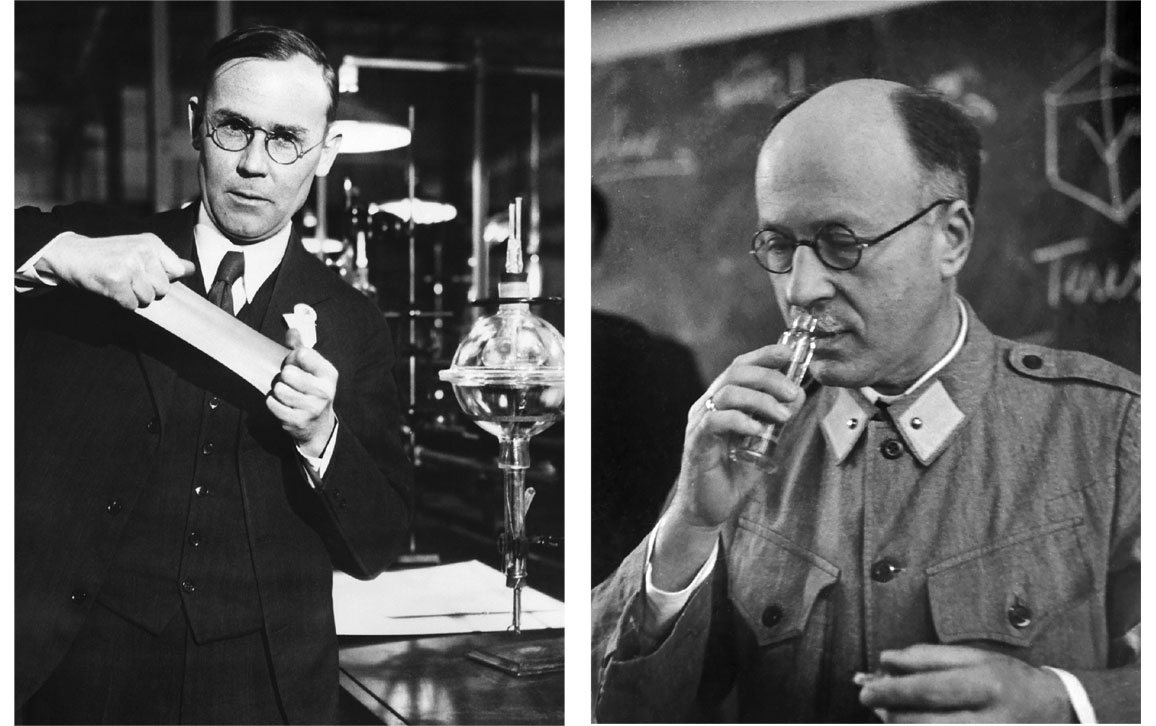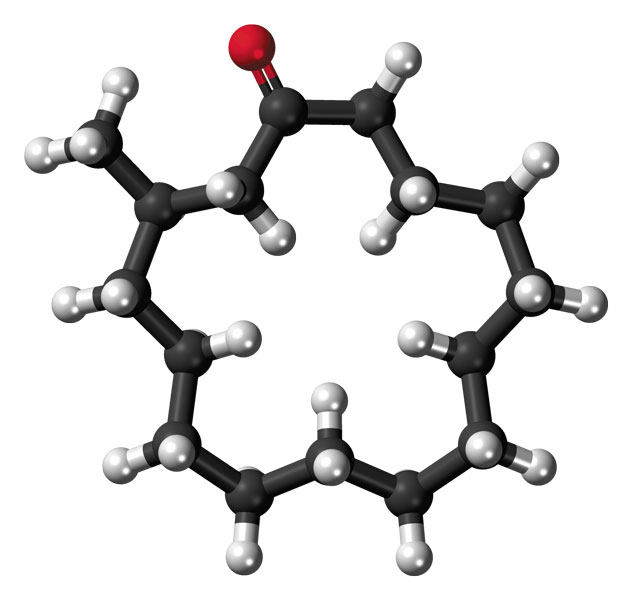The Overlooked Influence of Perfumery in Organic Chemistry
By Stacey Lutkoski
Leopold Ružička’s and Wallace Carothers’s lauded polymer research was rooted in their work in the fragrance industry.
Leopold Ružička’s and Wallace Carothers’s lauded polymer research was rooted in their work in the fragrance industry.

Historians often find that the most intriguing details are hidden in the footnotes. That was the case when historian of science Galina Shyndriayeva found an unexamined connection between two prominent 20th-century organic chemists, Leopold Ružička and Wallace Carothers: perfumery.
Shyndriayeva, a researcher at Musashi University in Tokyo, found that biographies of Ružička and Carothers gloss over their work developing synthetic musks used to make fragrances. These lab-created musks consisted of large ring chemical compounds, the same polymers behind their later, more lauded work. Ružička received the 1939 Nobel Prize in Chemistry for his role in developing the first synthetic steroids, and Carothers is remembered for his work at DuPont, where he created both nylon and neoprene. But, as Shyndriayeva discusses in her recent article published in Isis, the foundations of these projects both go back to the large ring chemical compounds they created for the fragrance industry.
“Linking these two celebrated chemists through perfumery was quite exciting,” Shyndriayeva says. “The general story is somewhat known, but fragrances were considered a side project. Researchers interested in the history of industrial research focus on big projects from big companies. Perfume was seen as a small thing.”

New York Public Library / Science Source (left), ETH-Bibliothek Zürich / Science Source (right)
But that perception of perfume as a side project is a relatively new development. Ružička and Carothers did not hide their connections to the fragrance industry. Ružička, who was born in 1887 in what is today Croatia, worked for or collaborated with the Swiss perfume supplier M. Naef for much of his career. There, he researched several chemicals, including muscone, the organic compound that gives musk its scent.
Musk is used in perfumery both as a scent and as a fixative for other fragrances. It is naturally derived from the scent glands of musk deer (Moschus sp.), the most prized of which live in the Himalayas and China. A single kilogram of musk requires the harvesting of 30 to 50 male musk deer. Because musk is so difficult to obtain, at the time that Ružička and Carothers were working it was worth more by weight than gold. Existing musk substitutes resembled the smell of the natural product, but they would degrade and discolor over time.
Ružička recognized that the chemical structures of commercially available musk substitutes did not resemble that of muscone. His experiments with civetone (musk from a civet) revealed that the molecule was a large ring, and he suspected that muscone would have a similar structure.
The prevailing theory at the time was that chemical rings with more than eight atoms would be too unstable and therefore could not exist. Baeyer’s strain theory, named after German chemist Adolf von Baeyer, assumed that molecular rings were planar. That structure would put too much pressure on the bonds between atoms for large molecules to form. In civetone and muscone, however, Ružička found evidence that large ring chemical compounds did exist. This discovery required chemists to rethink molecular rings as three-dimensional objects rather than flat circles.
“When Ružička synthesized civetone and muscone,” Shyndriayeva says, “he couldn’t help but conclude that really large rings exist, and that we needed to rethink our theories of carbon ring structure.” Ružička experimented with different chemical ring sizes and found that those with between 14 and 18 carbon atoms had the strongest musk scent.
Despite the central role of perfumery in the work of both Leopold Ružička and Wallace Carothers, fragrance development is rarely mentioned in summaries of their careers.
Ružička published his findings in 1926. Two years later, Carothers joined the DuPont Experimental Station in Wilmington, Delaware, where he led the organic chemistry group’s research into polymers. At the time, DuPont had a fairly open attitude toward research. Chemical director Charles M. A. Stine encouraged basic research within the various groups.
“It was not a linear model,” Shyndriayeva says, “but more of a reservoir model where basic research increases the pool of knowledge. And then, hopefully, a selection of that knowledge will lead to new developments in the hands of clever people.”
Carothers was one of those clever people. He built upon Ružička’s research into large ring chemical compounds by developing long-chain polymers (which could, in certain cases, be looped into long rings). These long-chain polymers are the basis of synthetic materials still widely used today, such as nylon and neoprene.
But DuPont’s interest in these polymers went beyond nylon and neoprene: The company also had a fragrance division, DuPont Aromatics. Carothers developed methods to more easily create large ring chemical compounds that could be used as fragrances, and he and his colleague, Julian W. Hill, created a table describing the odors of each resulting chemical.

Wikimedia Commons
Despite the central role of perfumery in the work of both Ružička and Carothers, fragrance development is rarely mentioned in summaries of their careers. In his 1945 Nobel Lecture (his address was delivered six years late due to World War II), Ružička noted his connection to the perfume industry, but quickly moved on. Shyndriayeva found that biographies of Carothers similarly downplay the role of fragrances, only mentioning it in passing, if at all. The reason for this omission isn’t clear, but Shyndriayeva suspects that the association with feminine luxury products contributed to the oversight.
“Women’s luxury products tend to lend themselves very well to cultural history and analysis,” Shyndriayeva says, “but when we think about the histories of invention, these products don’t come into the picture.” When fragrance development is omitted from Ružička’s and Carothers’s stories, “we lose how central perfumery was to the development of organic chemistry. It changes our perception of what kind of product perfume is.”
Shyndriayeva is part of a cohort of historians who are investigating the role the senses have played in scientific developments. For instance, food writer and historian Nadia Berenstein has done work on artificial flavors, and Ai Hisano at the University of Tokyo researches the role of dyes in the food industry. Most of these historians are female, and they are examining topics and materials that have been marginalized in the dominant narrative of scientific innovations.
“We have preconceived ideas about what technologies are important, and what is science,” Shyndriayeva says. “But these ideas are historically contingent. Things that we use—What are the histories behind them? They may be more scientifically involved than we realize.”
Click "American Scientist" to access home page
American Scientist Comments and Discussion
To discuss our articles or comment on them, please share them and tag American Scientist on social media platforms. Here are links to our profiles on Twitter, Facebook, and LinkedIn.
If we re-share your post, we will moderate comments/discussion following our comments policy.